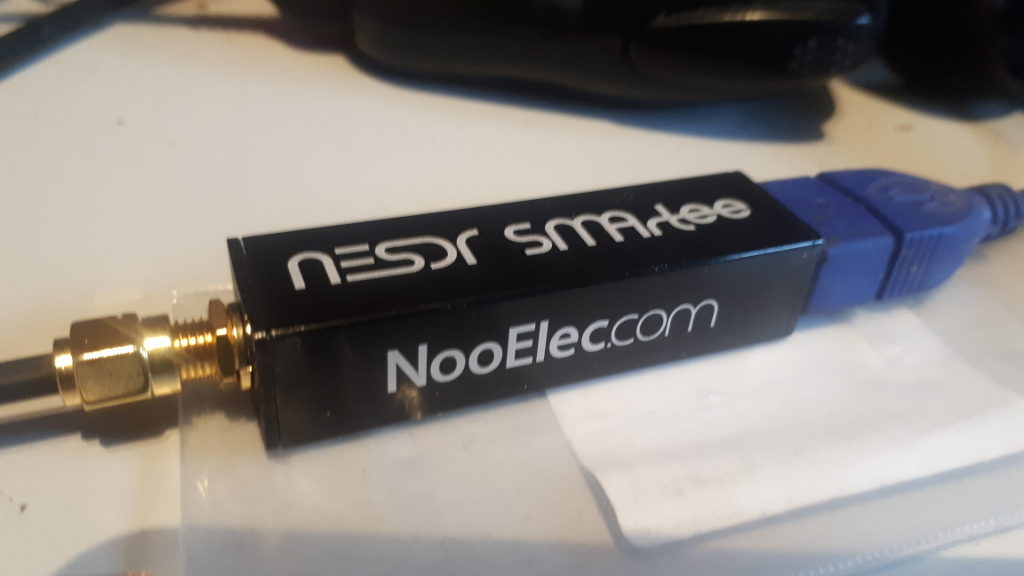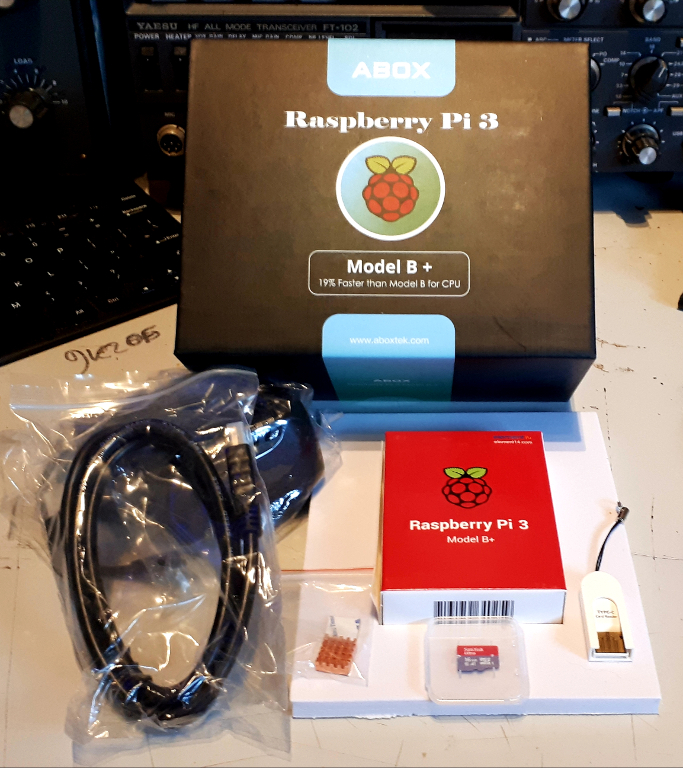My birthday has been and gone.. I always get asked what I would like and as usual I struggled – however, I’ve asked for two aluminium scaffold tubes from Mum & Dad – yet to arrive but no rush – these will be used on each gable of the house… one to put the rotator on top of and the other to support an end of a wire or two…
I was having issues with CQRlog and the connection to the HamQTH cluster (I later worked out that it was operator error, nothing new there) so I went looking for an alternative cluster connection and found this link http://www.dxcluster.info/telnet/index.php – spotted my twitter friend Keith’s (G6NHU) cluster – I tweeted him to ask if it would be OK to use it and he was kind enough to say yes… He told me it was running on a Pi – the conversation continued, me saying that I hadn’t got Raspberry Pi (nor an SDR thingy-ma-jig) as I didn’t have any projects for them so I was unlikely to get one for a while – he then suggested tracking aircraft using ADS-B… (this happens on 1090 mHz) and he also suggested I may want to try setting up my own cluster too as both could run on a Pi at the same time.
If you are looking for a cluster then Keith’s is on all the time, running on a Pi and you can connect by Telnet “g6nhu.getmyip.com:7300” – then if you want to send spots message Keith through his website for a login and password or ping him an email, you can get his address from www.QRZ.com
Sorry, waffling on… my last minute request to wife and kids for birthday presents was for a Raspberry Pi 3 Model B+ and a NooElec NESDR SMArTee – happy days… they arrived…
This weekend was an unusually free one, no commitments, no outings planned so it’s a radio weekend for me…
I don’t have a screen for the Pi so that’s going to have to wait, however I was keen to get the SDR dongle doing something… bloody hell its convoluted… I wasn’t expecting it to be so involved – just for quick gratification I set it all up on a Windoze10 laptop I have – it’s old and nothing special, just got it for the shack (it was cheap) so I can mess with things like this… so the next few steps are based around setting up the SDR dongle (and using it for ADS-B) under the Windoze environment – sorry! 🙂 First thing to do is install the driver for the dongle – googling I found that a bit of software called Zadig was needed.. plug in the dongle to a USB socket, download and open up the .exe, then at the top, ‘Options’, ‘List all devices’… then in the drop-down menu find your dongle – mine was called “RTL2838UHIDIR” – then hit the large ‘Replace Driver’ button… typically I think you have to reboot your pc after this – I wasn’t 100% sure about that but did it anyway – leave the dongle plugged in!
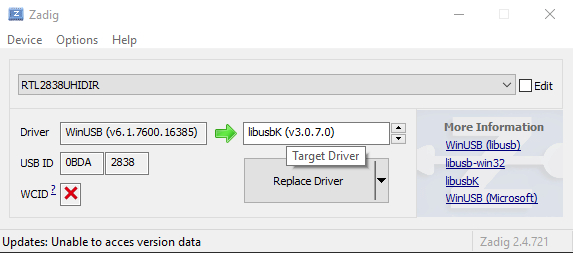
I then downloaded SDR# (SDRsharp) – first I tried receiving a local broadcast radio station – I just couldn’t get SDR# to work or even find my dongle. My friend Dale (MM0INH) suggested SDR Console and boom… it worked…. another new bit of software to learn… but I’m not dwelling on that at the moment..
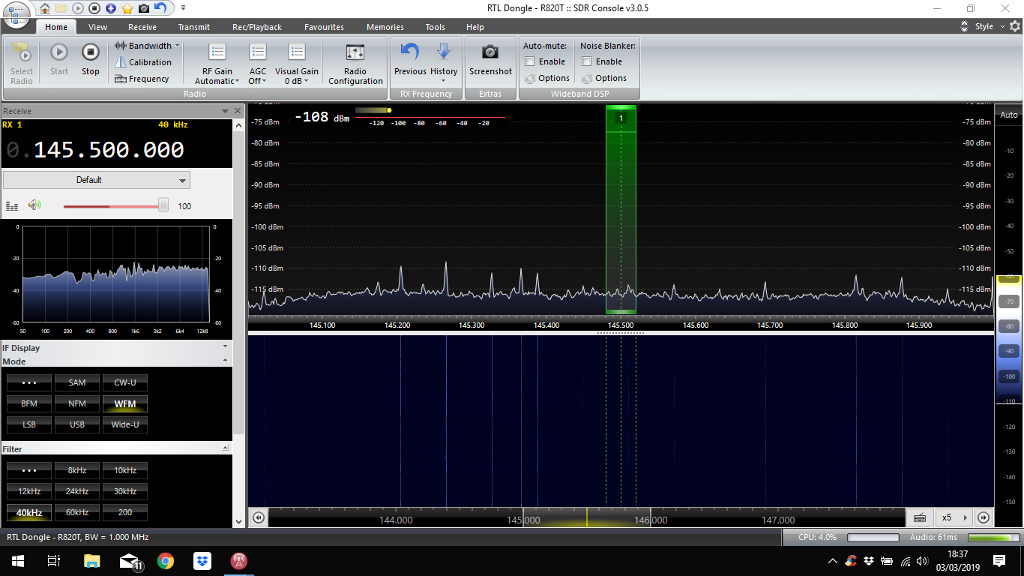
On to receiving ADS-B telemetry & the decoder & user interface to do so…
First we need an aerial eh – trusty google threw up a very basic 1/4 wave vertical, based around using an SO-239 but I had a better idea… using some RG213 I stripped back the inner core to form the vertical (68.8mm) – found that I had some microbore copper pipe which I slid over the braid, folded the braid over that and then soldered the braid to the copper pipe – this was to create a strong collar to then solder the four 1/4 radials on to, at a 45deg angle – the antenna was born, then with a bit of weather proofing by means of liquid tape, it’s done (needless to say I tried it just as a bit of wire & with radials before the liquid tape was applied).
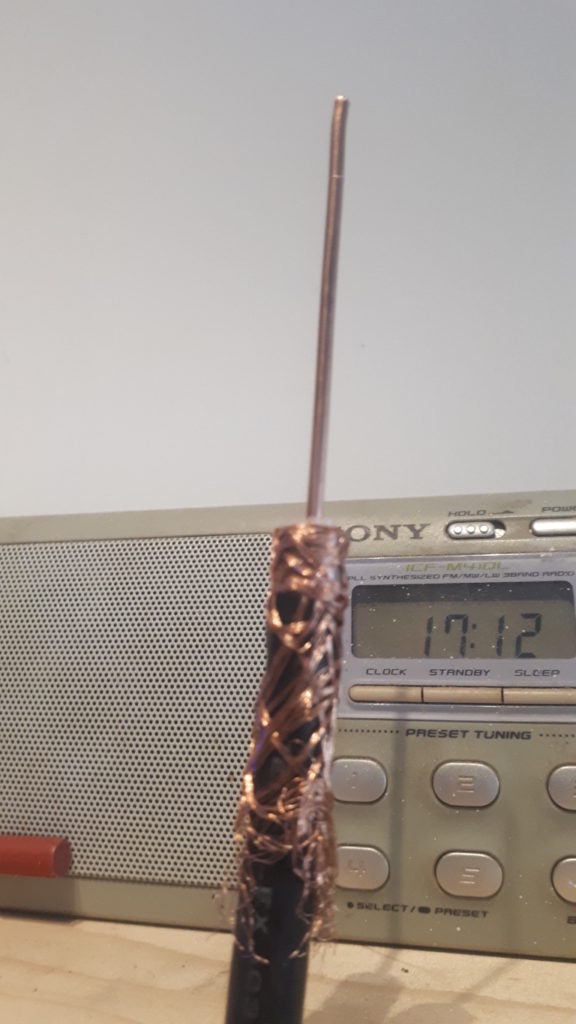
Aerial v1 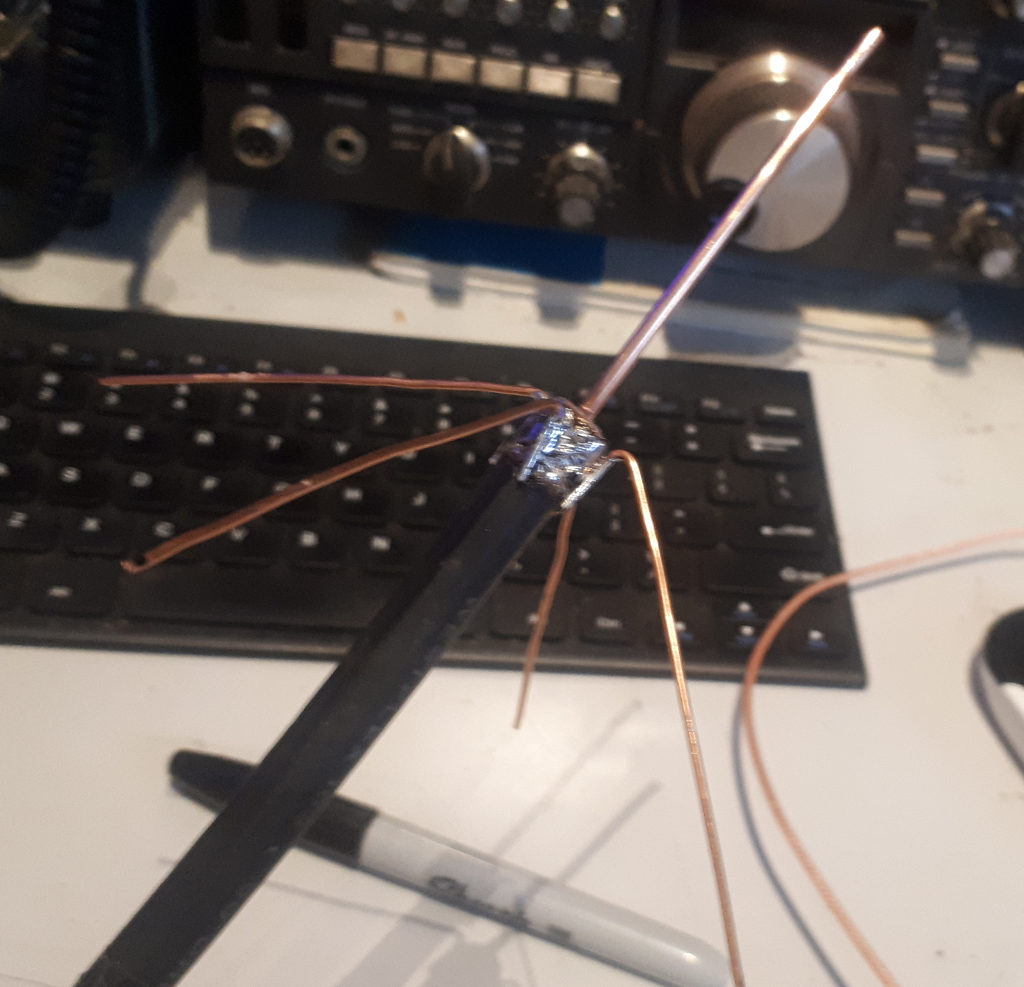
Aerial v2 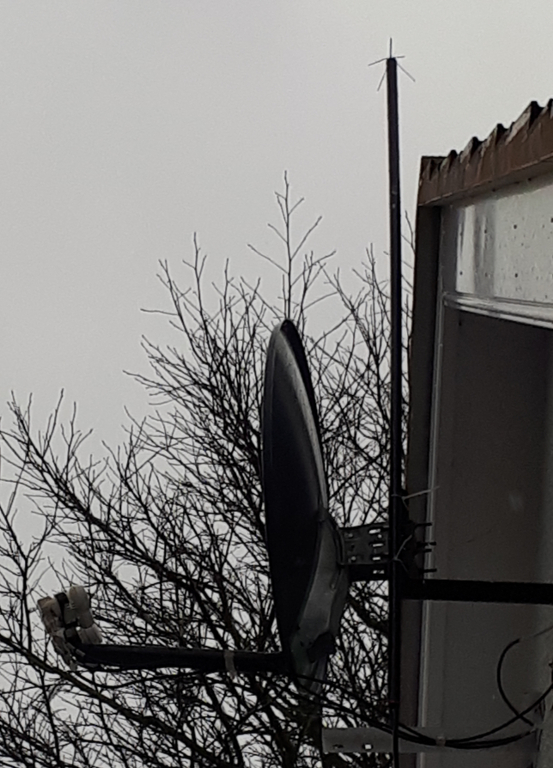
Aerial v3 and aloft
Now the ADS-B decoder software.. Dale suggested rtl1090 – it’s a bit DOS looking and I cant remember exactly what I did to get it receiving but it runs, if I could work it out I’m sure you will too… It displays all textual data though (see pic below) – I want to see pictures of where the planes are rather than letters and numbers so I needed a graphical interface between the decoder and I WANT A MAP (I love maps) – googling again I found Virtual Radar Server (VRS) – download and install – then ‘Tools’, ‘Options’, check the map is set as ‘Leaflet’ as google doesn’t play nice any more these days needing an API key – if you have one then I guess you will be fine. Then, on the left hand side click on ‘Receivers’, ‘Receiver’ and select “AVR or Beast Raw Feed”, connection type is ‘Network’, and note the address and the port, in my instance ‘127.0.0.1’ & ‘31001’ (I’m guessing yours will probably be the same) – your SDR dongle (the Receiver) should now be listed under ‘Receivers’.
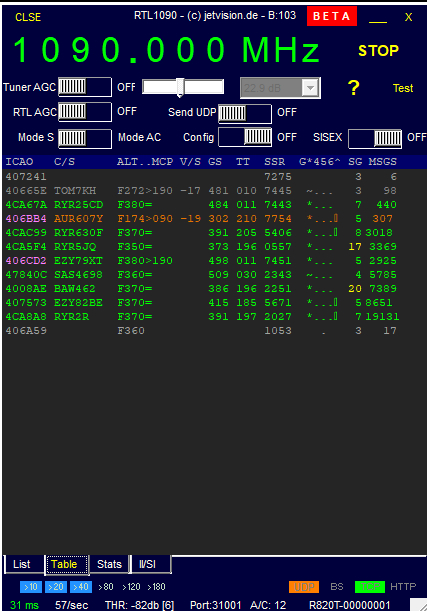
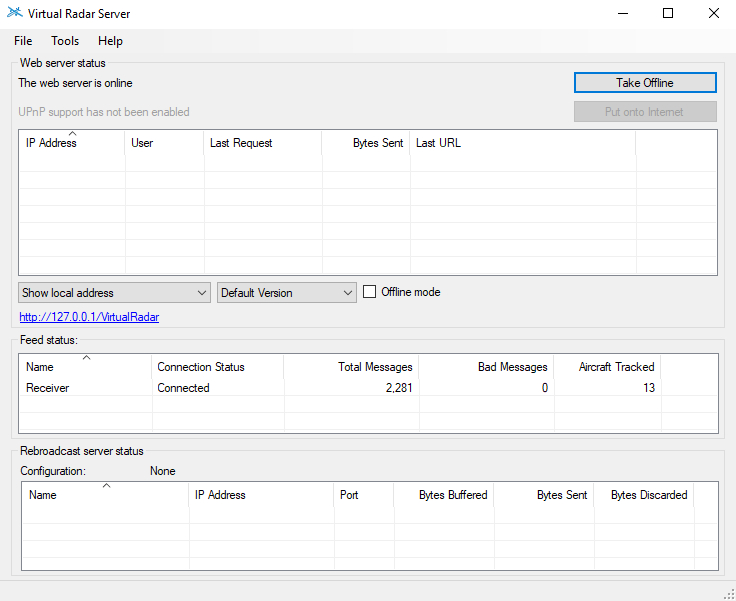
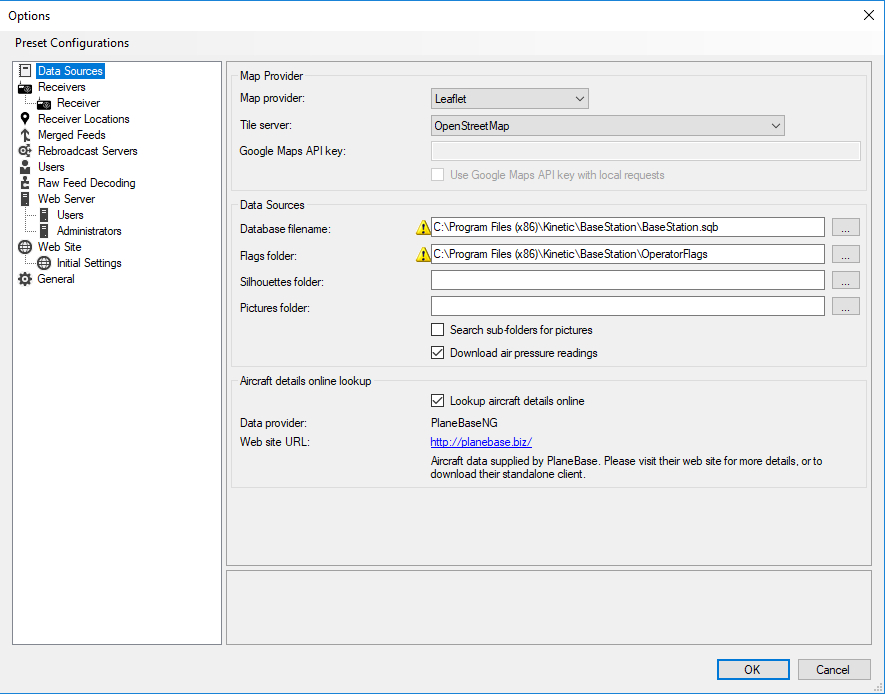
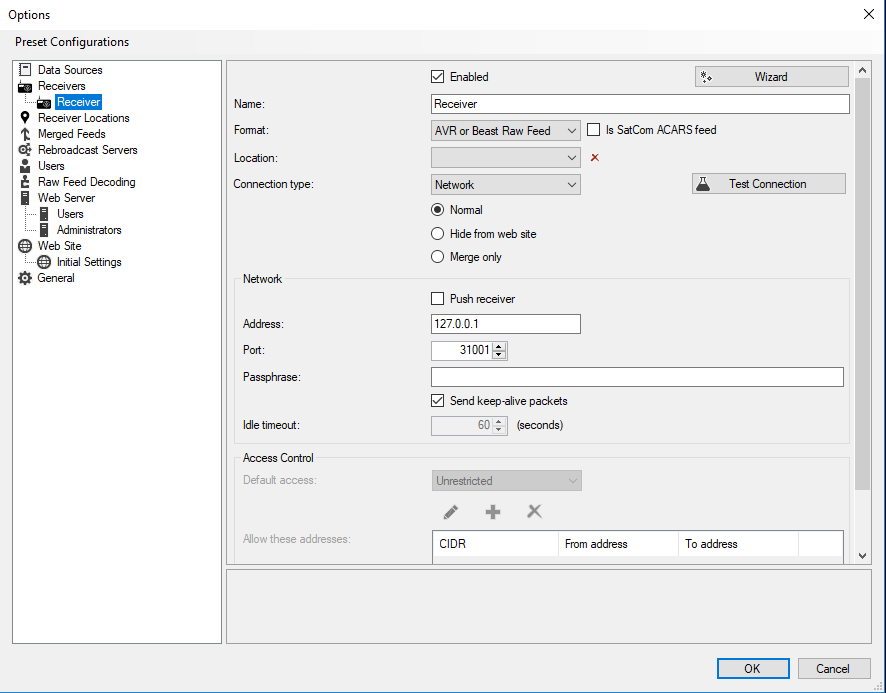
Now open your web browser and navigate to 127.0.0.1/VirtualRadar/desktop.html# – assuming that rtl1090 is running and your antenna is connected it should populate the screen with some aircraft…
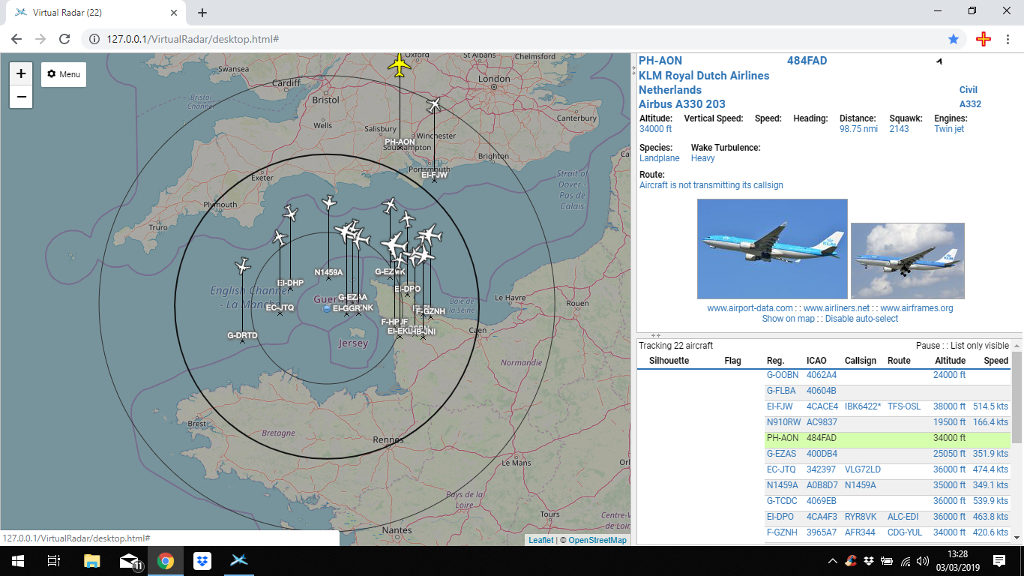
Boom – you’re done! now to improve the RX… height is mite and there are many other antenna designs – I’m going to have a go at a collinear (see below) and see if that helps but with the aerial inside at about 6′ (1.8m) above the ground it’s receiving about 50 miles away with just a handful of planes – now it’s up outside at about 30′ (9m) the best I’ve seen so far is 117 miles and approximately 20/30 planes – but that’s dictated by how busy the area is within my 100 mile radius. To get the aerial up to 30′ I found some 1″ plastic pipe (originally bought to make an Arrow type antenna), slid the antenna coax down through the pipe and the radials are then used to stop it falling through. I just cable-tied the pipe to the back of my satellite dish support (no the dish is not for the big flying space repeater QO-100) and Bob’s your Uncle.
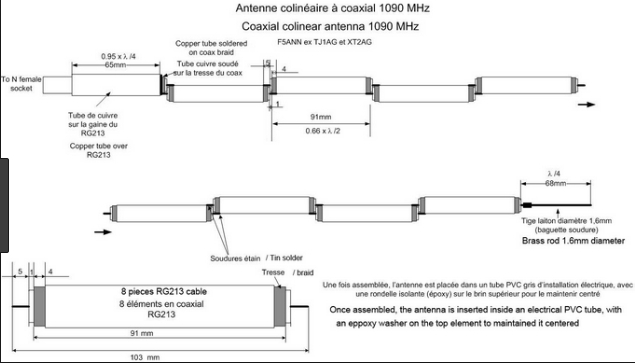
If you don’t want to play Windoze (nor me!)? Well there is a great package provided by FlightAware called PiAware – it gives you the Pi image and all you do is squirt it on to the MicroSD card and connect the SDR dongle and antenna and you are pretty much done – or at least that’s what Keith said – I can’t say that’s all you need to do as I haven’t tried it yet but I’m sure Keith knows his stuff and I believe that’s how he set his up initially – probably with some other tweaks later on though…
Thanks to Keith and Dale for the pointers and advice and a last minute thanks to Roy (M0ORH) for his collinear challenge of 100 sections ha ha ha along with Flightradar24 information which came through the twitterverse as I complete this post (seems Flightradar24 is similar to FlightAware with Pi image etc).
I cant say it was easy for me to sort the software and there was a lot of trial and error but hopefully the above may get you up and running too, if it doesn’t then I really hope it gets you close enough to work it out yourself. – 73!


